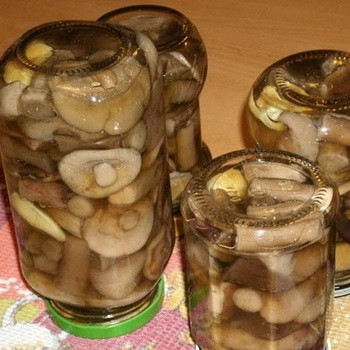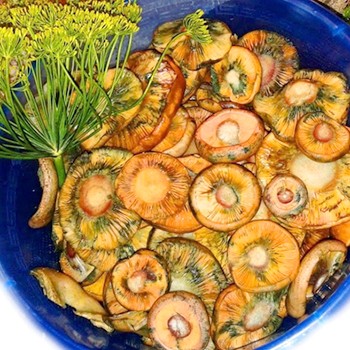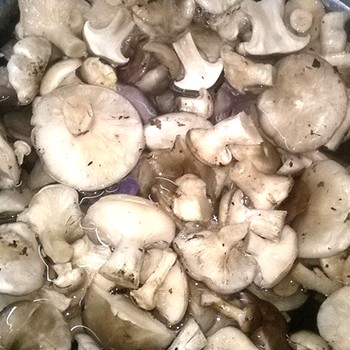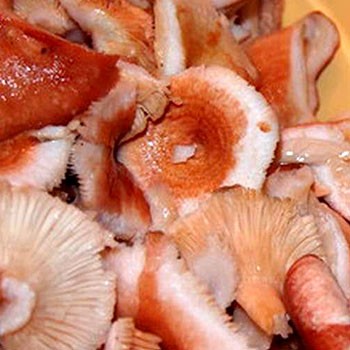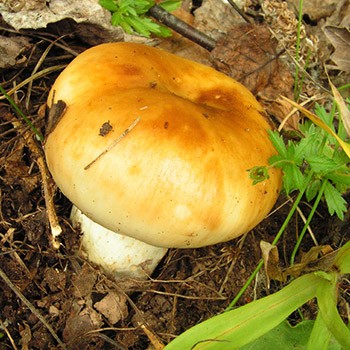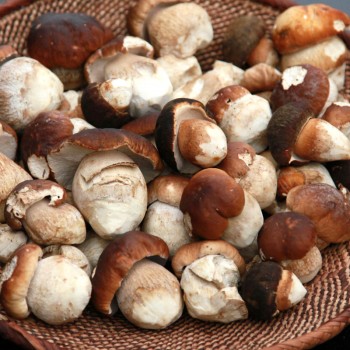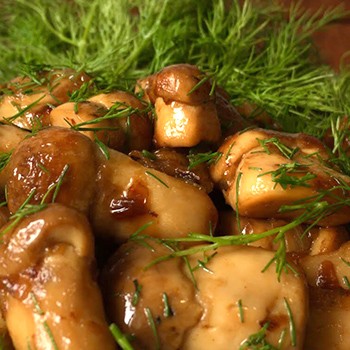Homemade methods of harvesting mushrooms for the winter
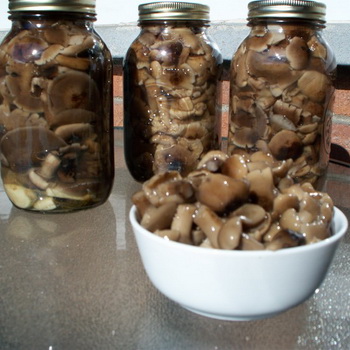
Content
- How to make mushroom harvesting for the winter: jars and other equipment
- How to prepare mushrooms for the winter in jars with glass lids
- Mushroom preservation for the winter at home in tin lids
- Harvesting salted mushrooms: pickling in an oak tub
- How to salt mushrooms for the winter at home: pickling in jars and barrels
- How to dry mushrooms at home
How to make mushroom harvesting for the winter: jars and other equipment
The first thing you need to take care of to make the harvesting of mushrooms for the winter is packaging and equipment for home canning.
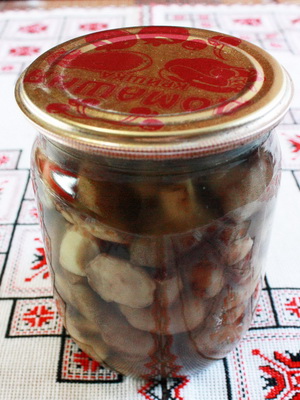

Canned food at home is most often made in ordinary glass tin cans with tin lids. But in recent years, glass jars for harvesting mushrooms for the winter with glass lids, wide rubber rings and clamps - especially for home canning - are increasingly being sold. Such cans for canning mushrooms are more convenient for work, and they should be recommended first. Work with these two types of cans is carried out in different ways.
Ordinary glass cans for harvesting mushrooms for future use are available in every household; their acquisition is not difficult. To seal these cans, tin lids with narrow (rectangular cross-section) rubber rings are used. Such covers complete with rings are sold in hardware stores.

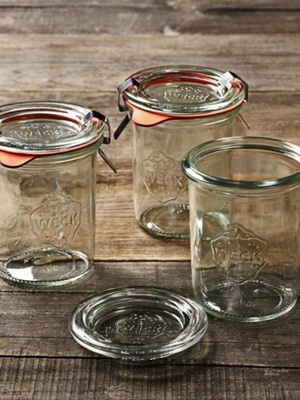
The corolla of the neck of cans for harvesting mushrooms has a strictly defined diameter (most often 83 mm, but there are also other sizes). The lids are made exactly the right diameter to ensure complete tightness of the cans. On sale you can find white lids made of tin, tinned tin, and yellow, coated on top with a layer of resistant food varnish. Lacquered lids are used to seal acidic fruits and berries, as well as marinades. Some products - jams, jams or jams - can be corked with unvarnished (white) lids.
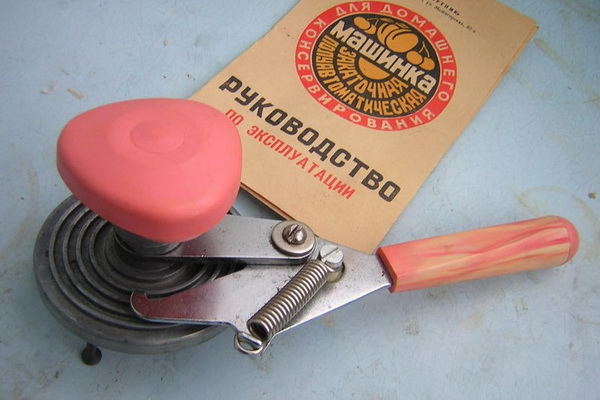
Manual capping machines are used to seal cans with tin lids. The machine consists of a steel roller, a cartridge, a clamping lever (fungus) and a handle.
To harvest mushrooms for the winter you will need the following equipment: an aluminum or enameled pan of 3-5 l for blanching; a pan for sterilization (high), in which 3-4 or more cans can be placed, covering it with a lid; slotted spoon, colander, knives, tablespoons and teaspoons, forks - all made of stainless steel.
In addition, for home harvesting of mushrooms, you should have a device for extracting cans from the pan, wooden mugs for cans, as well as a thermometer suitable for determining the temperature of water in the pan and canned food in the bank during sterilization and blanching of fruits and vegetables.
For heating, it is best to use a gas stove.
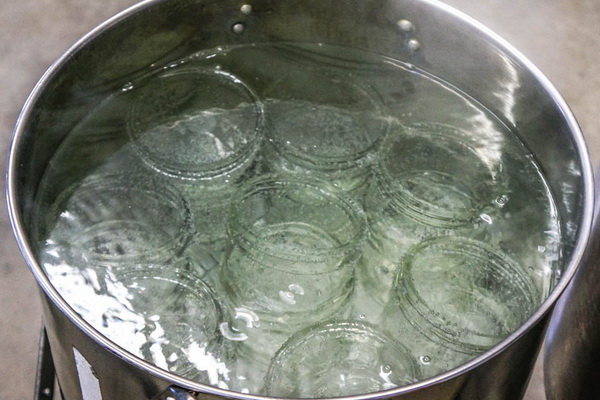
Glass jars for harvesting mushrooms for the future before canning should be thoroughly washed and boiled for several minutes, completely immersed in a large pot of water.
The required sterilization duration (in minutes) and temperature (in degrees) are set for each type of canned food in jars or bottles of different capacities. Most often, home-made canned food is sterilized at 100 ° C, i.e. in boiling water.
Depending on the cans in which cans are made, the rules for mushroom harvesting and the operating procedure are different. Next, you will learn how to prepare mushrooms for the winter in jars with glass lids and in jars with tin lids.
How to prepare mushrooms for the winter in jars with glass lids
Filled jars are covered with glass lids so that the rubber ring fits between the lid and neck of the jar and completely covers the upper (usually grooved) section of the neck. Using a clamp or spring, the lids are pressed tightly against the can. In advance, in a saucepan, heat the water to 55-65 ° C and put sealed cans in this water.
To properly prepare mushrooms for the winter, water is taken in such an amount that it covers all the cans with lids (you can measure in advance to what level to pour water). A wooden lattice circle or a piece of cloth is placed under the banks at the bottom of the pan, so that when heated, the bottoms of the cans do not touch the bottom of the pan (otherwise local overheating is possible and then the glass may burst).
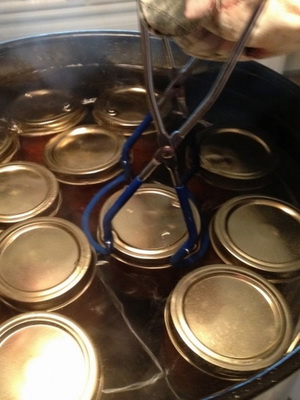
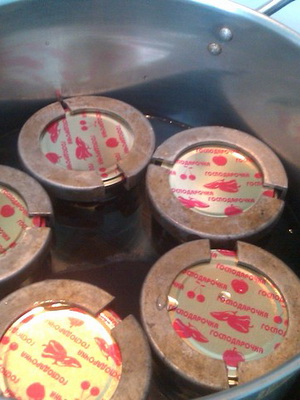
Further, at home canning of mushrooms, they continue to heat the pan with banks and water until the water in the pan boils. The moment of the beginning of boiling water in the pan is considered the beginning of sterilization. From this moment, the cans are kept at a moderate boil for as many minutes as indicated for this type of canned food. Boiling should not be stormy - this is not necessary, the temperature of the water in the pan will still not rise. During sterilization, when preserving mushrooms at home, the pan should be covered with a lid so that there is less heat loss and so that fumes do not stand out in the room.
With this sterilization, fruits and vegetables in jars are heated by water in a pan, and the microbes in them die. If the pressure rises in the bank during heating as a result of expansion of the liquid and the formation of vapors, the lid will slightly rise. In this case, excess vapors and the air remaining there will be squeezed out of the can from the can, after which the lid will again fall into place under the action of the clamp, and water from the pan will not get into the can.
After the time necessary for sterilization has elapsed, the cans are removed from the water and, without removing the clamps from them, set for gradual cooling in air or gently cooled with water. At the same time, so that the jars do not burst during water cooling, they are first immersed in moderately warm water, and then after a certain temperature decrease the contents are rearranged in colder water.
It is impossible to remove clips from hot jars when canning mushrooms at home. During the cooling of the cans, the glass lids are tightly attached to them - then you can remove the clamps and put the canned food in storage. The lids are held on the cans because a rarefied space (vacuum) is formed in the cans. To open such a jar, it is necessary to use a knife to slightly push the rubber ring inward on one side (or, if there is a tongue on the ring, pull it and pull out the ring slightly). Then the air outside will fall into the jar - and the lid will open itself.
Jars with glass lids are most convenient for home canning: you do not need any devices (except for the spring) for capping and opening.
Mushroom preservation for the winter at home in tin lids
To preserve mushrooms for the winter in glass jars with tin lids, they are first filled in the same way as described above.Then the cans are only covered with tin lids, and not rolled up and placed for sterilization in a pan with heated water (on a wooden lattice circle or a piece of cloth), but with the expectation that after installing all the cans it does not reach the lids by 1.5-2 cm.
After that, the cans continue to heat until the water begins to boil in the pan and can withstand the prescribed number of minutes at moderate temperature conditions.
At the end of the sterilization, the cans are carefully removed from the pan, they do not open their lids (for this it is better to use special devices so as not to burn yourself). The cans removed are placed on the table and immediately corked with lids using a seaming machine.

Corked cans are left to cool upside down, with the lids down. This is done in order to further sterilize the lids with the hot contents of the cans. In addition, if the roll was not made correctly, a leak will immediately be detected in the inverted bank.
Thus, in glass jars with tin lids, canned food is first sterilized, and then cans are corked. If you first seal the jars, and then put them in a pot of water and heat it to a boil, then from the expansion of air and vapors, increased pressure will form, as a result of which the lids will be torn off the cans, i.e. all the work done will be nullified, and the products will be spoiled.
Harvesting salted mushrooms: pickling in an oak tub
Salting mushrooms at home is a science. This process was described in detail by a great connoisseur of Russian nature, the writer V. Soloukhin in the book “Gifts of Nature”, observing the process of pickling mushrooms by Pavel Ivanovich Kositsyn, who had worked as a forester for many years.
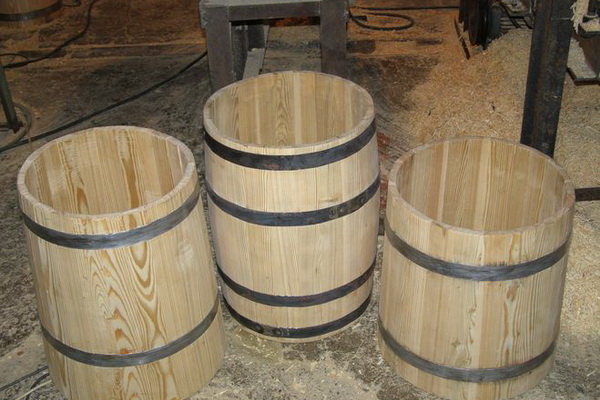
Before salting mushrooms for the winter, the oak tub should be thoroughly washed. Put juniper branches in it, and scald these branches with boiling water so that their spirit pervades the wood of the tub. Then it is covered with a cotton blanket so that the juniper steam does not come out. Raising the blanket, they throw a very hot stone into the tub. The water hisses and rumbles dullly under the covers, and a new portion of juniper aroma is absorbed by the tub. However, the matter concerns not only the juniper aroma, which probably could be dispensed with. But in this way disinfection is carried out, and this is the guarantee that the mushrooms in the winter will not turn sour and start to mold.
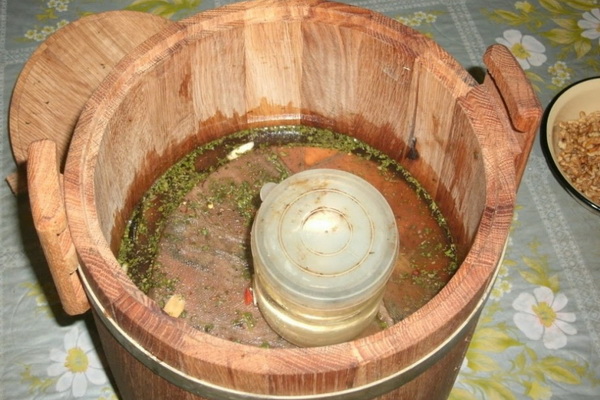
So, the oak tub for salting mushrooms is ready, now mushrooms or other gifts of the forest must be thoroughly wiped with a rag from the ground and debris. Lay dry mushrooms in rows and layers so that each layer is obtained with half a quarter of the thickness. Stacked mushrooms are sprinkled with seasonings: dill, currant leaves, horseradish leaves, oak leaves, cherry leaves. Of course, you can put cumin, and in general everything that can give its own special taste. So when harvesting salted mushrooms lay layer by layer until the tub is full.
On top of the mushrooms you need to put a bag of gauze filled with salt, spread it evenly over the entire surface. Put a wooden, purely washed circle on this bag, and oppress, most often an ordinary river stone, on the circle. After a while, the circle and stone will begin to sink, and abundant mushroom juice will appear on top of them, which Pavel Ivanovich recommends scooping from time to time.
Two months later, you can eat mushrooms. That is, what does “you can eat” mean? At home pickling mushrooms, they can be eaten the next day. But in two months, the gifts of the forest will saline, take in all possible shades of aroma and taste and become what the cook wanted to see them.
Needless to say, salted in this way saffron milk cap hardly anyone will be indifferent, especially in winter, but with hot boiled potatoes! Almost all types of lamellar mushrooms can be salted.
Some also pick porcini mushrooms, but it’s better not to do this, because each mushroom has its own purpose.
How to salt mushrooms for the winter at home: pickling in jars and barrels
How else can you salt the mushrooms at home to make an excellent harvest for the winter?
As a rule, the most commonly used cold method of salting, that is, without preliminary heat treatment of mushrooms. Salting mushrooms in this way is not at all difficult.
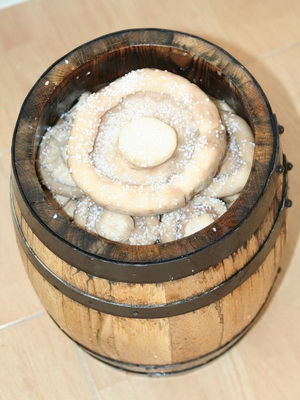
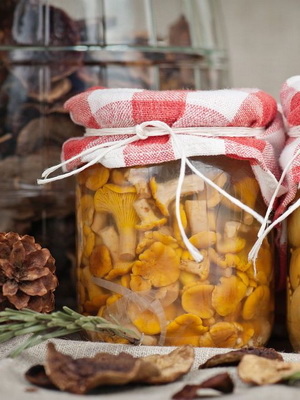
Oak barrels, glass and clay jars with a wide neck are suitable as a container for pickling mushrooms.
Before salting mushrooms for the winter in jars or barrels, first of all, mushrooms prepared for salting (washed and peeled) must be soaked in cold, slightly salted water so that there is no bitterness in them. Two to five days are enough to soak any mushrooms. It all depends on their type. So, saffron milk donuts are not soaked at all, and valuys and breasts must be kept in water for 3-5 days. And yet, do not forget to change the water three times a day before soaking the mushrooms in a barrel.
For salting 10 kg of mushrooms, approximately 250-300 g of salt is required, 2-3 g of allspice, bay leaf (if desired, you can put garlic, currant leaves, cloves, dill and other spices in your mushrooms to your taste).
Stack mushrooms in a bowl with their hats down. Each layer (5-7 cm) is poured with salt.
Spices are usually placed on the bottom of the bowl and on top of the mushrooms, but you can put between each layer, especially when it comes to dill, leaves of fruit trees and shrubs.
Mushrooms laid in this way are covered from above with a wooden lid on which they put oppression.
Usually, after a day or two, a brine appears abundantly. Excess must be drained. This is done until the mushrooms finally settle. The lack of brine suggests that it is necessary to increase oppression.
With this method, salted mushrooms can be eaten in a day after 2-3, breasts - in a month, waves in one and a half, and valui in 2 months.
Store salted mushrooms in a cool place at temperatures up to + 8 ° C, but not lower than 0 ° C.
For 1 kg of mushrooms take 1 \ 3 cups of water, 2/3 cup of table vinegar, 1 tbsp. teaspoon of salt, 1 teaspoon of sugar, allspice, cinnamon, cloves, bay leaf and other spices to taste.
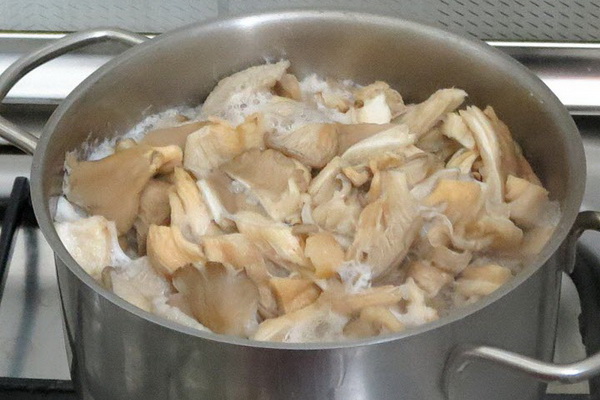
Water, vinegar are poured into an enameled pan, salt is put. After the water boils, lay the prepared (washed and peeled) mushrooms and again, bringing to a boil, cook them on low heat for 10 to 30 minutes. Cooking time depends on the density of the pulp of the mushrooms.
When cooking in a pan, copious foam accumulates. It should be removed periodically. When the foam stops and the mushrooms begin to settle to the bottom of the pan, boiling ends. Shortly before the end of cooking, salt and spices are added to the marinade.
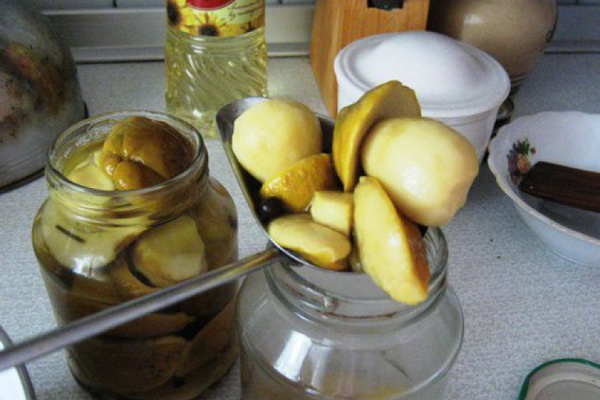
Ready mushrooms are quickly cooled, put in jars and poured to the top with a cooled marinade. Properly boiled marinade is usually translucent, clean and slightly viscous.
Pickled butter is especially good.
The least suitable for pickling are boletus, boletus and White mushrooms, since when cooking, their hats are boiled, which makes the marinade clogged and cloudy.
How to dry mushrooms at home
The easiest way to harvest mushrooms is by drying: any mushrooms can be dried, but they prefer strong mushrooms (porcini mushrooms), birch and boletus mushrooms, oils, morels and stitches. Lamellas are less suitable for drying, since the milky juice contained in them gives them a bitter taste. By the way, when buying these mushrooms on the market, you need to be very careful - when dried, they are very difficult to distinguish from poisonous ones.
How to dry mushrooms so that they do not lose their taste?
Before you dry the mushrooms at home, you do not need to wash them, it only needs to clean the gifts of the forest from the earth and litter. The legs are cut at a distance of 1.2-2 cm from the cap. Before drying the mushrooms, they must be sunk for 2-3 hours at a temperature of 40-50 ° C.
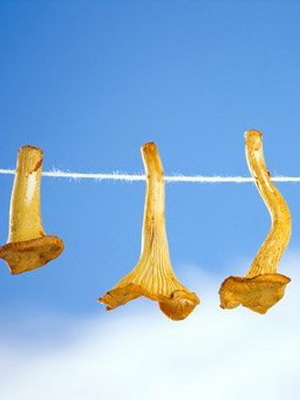

In hot sunny summers, mushrooms are best dried in the sun. To do this, they are strung on strong threads and hung so that the mushrooms do not touch.
Dried mushrooms are highly hygroscopic, so they need to be stored in dry, ventilated places. In cooking, dried mushrooms are hard to overestimate.Any 2-3 fungi added to meat or fish dishes, sauce or porridge can make this dish fragrant and very tasty. With only 1 kilogram of dried mushrooms, you can treat your loved ones with the most delicious dishes for a whole year.
